By calling this number, you consent to receive a follow-up text message from Erosion Control Direct if the call is missed
By calling this number, you consent to receive a follow-up text message from Erosion Control Direct if the call is missed
High-Quality Erosion Control Products for Every Project
Erosion Control Direct, Your Partner in Erosion Control Solutions
High-Quality Erosion Control Products for Every Project
Erosion Control Direct, Your Partner in Erosion Control Solutions
Our Erosion Control Products
Discover a Diverse Selection of Specialized Erosion Control Solutions Tailored to Safeguard Your Land
Our Erosion Control Products
Discover a Diverse Selection of Specialized Erosion Control Solutions Tailored to Safeguard Your Land
Need a Quotation?
Click below to speak with one of our professionals
Need a Quotation?
Click below to speak with one of our professionals
Why Choose Erosion Control Direct?
Choosing Erosion Control Direct for your erosion control needs means partnering with a seasoned expert in the field. With over a decade of experience, we have honed our expertise in supplying top-quality erosion control products. Our comprehensive range of solutions, from silt fences to geotextile fabrics, is designed to meet the diverse needs of both large-scale construction projects and small-scale landscaping efforts.
Our commitment to quality and sustainability ensures that every product in our inventory not only meets but exceeds industry standards. We understand the critical importance of protecting the environment while maintaining project timelines and budgets. That's why we offer products that are both effective and eco-friendly, providing you with the tools you need to prevent soil erosion, stabilize terrain, and promote healthy vegetation growth.
At Erosion Control Direct, we believe in building strong relationships with our clients in the United States. Our knowledgeable team is always on hand to provide expert advice, ensuring you select the right products for your specific erosion control challenges. With our proven track record, dedication to customer service, and unwavering commitment to environmental stewardship, Erosion Control Direct is your trusted partner in safeguarding your landscapes and construction sites against erosion.
Why Choose Erosion Control Direct?
Choosing Erosion Control Direct for your erosion control needs means partnering with a seasoned expert in the field. With over a decade of experience, we have honed our expertise in supplying top-quality erosion control products. Our comprehensive range of solutions, from silt fences to geotextile fabrics, is designed to meet the diverse needs of both large-scale construction projects and small-scale landscaping efforts.
Our commitment to quality and sustainability ensures that every product in our inventory not only meets but exceeds industry standards. We understand the critical importance of protecting the environment while maintaining project timelines and budgets. That's why we offer products that are both effective and eco-friendly, providing you with the tools you need to prevent soil erosion, stabilize terrain, and promote healthy vegetation growth.
At Erosion Control Direct, we believe in building strong relationships with our clients in the United States. Our knowledgeable team is always on hand to provide expert advice, ensuring you select the right products for your specific erosion control challenges. With our proven track record, dedication to customer service, and unwavering commitment to environmental stewardship, Erosion Control Direct is your trusted partner in safeguarding your landscapes and construction sites against erosion.
Featured Blog Articles
From the Experts: Navigating the Landscape of Erosion Control
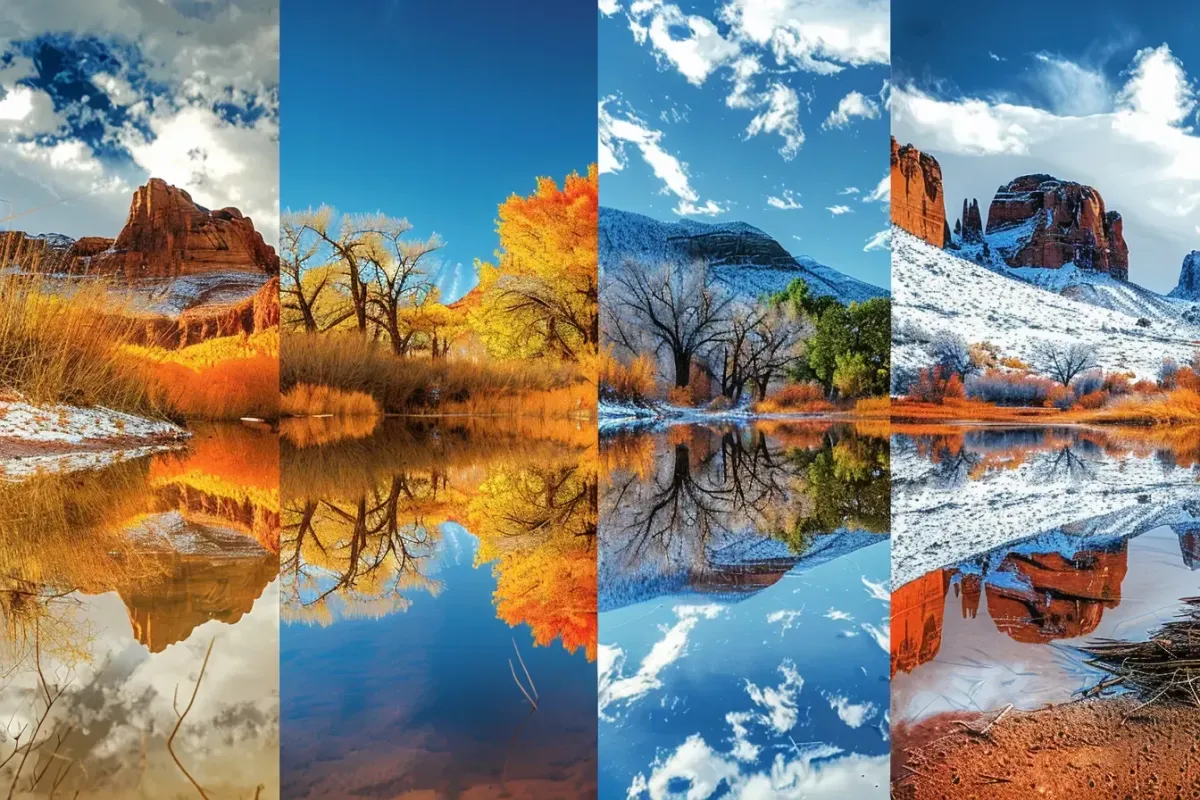
Year-Round Protection: Seasonal Erosion Control Solutions for Changing Weather
Erosion is a year-round challenge that requires adaptable solutions to combat the ever-changing weather conditions. As landscapes face different erosion risks throughout the seasons, it’s crucial to implement effective erosion control products that can withstand various environmental stressors. This comprehensive guide will explore seasonal erosion control solutions, providing you with the knowledge to protect your land effectively throughout the year.
Understanding Seasonal Erosion Challenges
Erosion doesn’t take a break, but its intensity and nature can vary significantly with the changing seasons. Let’s examine the unique erosion challenges each season presents:
Spring
Spring brings increased rainfall and snowmelt, leading to:
Saturated soils
Increased surface runoff
Potential for landslides and mudflows
Summer
Summer challenges include:
Intense thunderstorms causing flash floods
Dry periods leading to wind erosion
Wildfires leaving landscapes vulnerable to erosion
Fall
Autumn presents:
Falling leaves clogging drainage systems
Increased rainfall in many regions
Preparation for winter freeze-thaw cycles
Winter
Winter erosion risks include:
Freeze-thaw cycles causing soil expansion and contraction
Snow accumulation and rapid melting
Ice formation leading to soil displacement
Seasonal Erosion Control Strategies
To combat these varied challenges, it’s essential to implement durable erosion control measures that can adapt to changing conditions. Let’s explore strategies for each season:
Spring Erosion Control
Vegetation Establishment
Implement hydroseeding or traditional seeding
Use erosion control blankets to protect seeds
Plant native species adapted to local conditions
Drainage Management
Install or maintain proper drainage systems
Use check dams in channels to slow water flow
Implement bioswales for natural filtration
Slope Stabilization
Apply geotextiles on steep slopes
Install retaining walls for severe cases
Use terracing techniques on long slopes
Summer Erosion Control
Dust Control
Apply water or dust suppressants on exposed soil
Use mulch to cover bare areas
Implement windbreaks in open areas
Stormwater Management
Install detention basins to manage flash floods
Use permeable pavements to reduce runoff
Implement green roofs in urban areas
Wildfire Preparedness
Create firebreaks to prevent erosion after wildfires
Use erosion control logs on slopes
Apply hydromulch with tackifiers for quick vegetation establishment
Fall Erosion Control
Leaf Management
Regular leaf removal from drainage systems
Composting leaves for use as erosion control mulch
Installing leaf guards on gutters
Soil Preparation
Aerate compacted soils to improve water infiltration
Apply compost to enhance soil structure
Overseed bare patches to ensure good ground cover
Winterization
Install frost blankets to protect sensitive areas
Apply mulch to insulate soil and prevent frost heave
Secure loose erosion control materials before winter storms
Winter Erosion Control
Snow Management
Implement snow fences to control drifting
Create designated snow storage areas away from water bodies
Use environmentally friendly de-icing agents
Ice Control
Install heat cables in critical drainage areas
Use permeable materials in walkways to reduce ice formation
Apply sand or gravel for traction without causing erosion
Freeze-Thaw Mitigation
Use geotextiles to stabilize soil during freeze-thaw cycles
Implement proper grading to prevent water pooling
Maintain vegetative cover to protect soil structure
Year-Round Erosion Control Best Practices
While seasonal strategies are crucial, some erosion control practices are beneficial year-round:
Continuous Monitoring
Regularly inspect erosion control measures
Conduct soil tests to assess stability
Use remote sensing technologies for large-scale monitoring
Adaptive Management
Adjust erosion control plans based on performance and changing conditions
Stay informed about weather forecasts and climate trends
Collaborate with local environmental agencies for guidance
Integrated Approaches
Combine structural and vegetative erosion control methods
Implement both short-term and long-term solutions
Consider the entire watershed in erosion control planning
Education and Training
Provide ongoing training for staff involved in erosion control
Educate property owners about their role in erosion prevention
Stay updated on the latest erosion control technologies and regulations
Innovative Seasonal Erosion Control Solutions
As technology advances, new solutions are emerging to address seasonal erosion challenges:
Smart Erosion Control Systems
IoT-enabled sensors to monitor soil moisture and erosion rates
Automated irrigation systems that adjust based on weather forecasts
Real-time data analytics for proactive erosion management
Bioengineering Techniques
Living retaining walls using native plants
Mycorrhizal fungi inoculations to enhance soil stability
Engineered wetlands for natural erosion control
Advanced Materials
Photodegradable erosion control blankets
Self-healing geotextiles
Biopolymer-based soil stabilizers
Dr. Rachel Saunders, a soil scientist at the University of California, Davis, emphasizes the importance of adaptive erosion control:
“In the face of climate change, our approach to erosion control must be as dynamic as the weather patterns we’re experiencing. Implementing flexible, season-specific strategies is key to maintaining soil integrity year-round.”
Case Study: Successful Year-Round Erosion Control
To illustrate the effectiveness of seasonal erosion control strategies, let’s examine a case study from the Pacific Northwest:
Project: Multi-Use Development in Washington State
Challenge: Diverse landscape with varying erosion risks throughout the year
Solution: Comprehensive year-round erosion control plan
The Washington State Department of Ecology oversaw the implementation of a multi-faceted erosion control strategy that included:
Spring: Installation of erosion control blankets and hydroseeding on slopes
Summer: Implementation of permeable pavements and bioswales for stormwater management
Fall: Establishment of native plant buffers and installation of leaf guards on drainage systems
Winter: Use of geotextiles for freeze-thaw protection and strategic snow storage planning
Results:
85% reduction in sediment runoff compared to pre-implementation levels
Successful vegetation establishment with 95% coverage after one year
Significant improvement in water quality in nearby streams
Reduced maintenance costs due to proactive seasonal management
This case study demonstrates how a well-planned, season-specific erosion control strategy can yield significant environmental and economic benefits.
Erosion Control Product Selection for Seasonal Applications
Choosing the right erosion control products for each season is crucial for effective year-round protection. Consider the following factors when selecting products:
Durability: Choose products that can withstand the specific weather conditions of each season.
Biodegradability: Opt for environmentally friendly options that break down naturally over time.
Installation Ease: Select products that can be installed efficiently, especially in challenging weather conditions.
Versatility: Look for products that can serve multiple purposes across seasons.
Cost-Effectiveness: Consider long-term value and maintenance requirements.
The following table summarizes some popular erosion control products and their seasonal applications:
Conclusion
Implementing effective seasonal erosion control solutions is essential for maintaining soil stability and protecting the environment year-round. By understanding the unique challenges each season presents and adapting our strategies accordingly, we can significantly reduce erosion risks and promote sustainable land management practices.
Remember that erosion control is an ongoing process that requires vigilance, adaptability, and a commitment to best practices. By staying informed about the latest techniques and technologies, and by implementing a comprehensive, season-specific approach, we can effectively combat erosion in all weather conditions.
Q&A
Q: What are the best erosion control methods for each season?
A: The best methods vary by season:
Spring: Hydroseeding, erosion control blankets, and proper drainage systems
Summer: Dust control measures, stormwater management, and wildfire preparedness
Fall: Leaf management, soil preparation, and winterization techniques
Winter: Snow management, ice control, and freeze-thaw mitigation strategies
Q: How does erosion control change with the seasons?
A: Erosion control strategies adapt to seasonal challenges:
Spring focuses on managing increased rainfall and snowmelt
Summer addresses intense storms and dry periods
Fall prepares the landscape for winter conditions
Winter deals with freeze-thaw cycles and snow accumulation
Q: What plants are good for erosion control in different seasons?
A: Effective plants for year-round erosion control include:
Spring/Summer: Native grasses and wildflowers
Fall: Deep-rooted perennials and shrubs
Winter: Evergreen ground covers and hardy shrubs
Q: How do you prevent soil erosion in heavy rain?
A: To prevent soil erosion during heavy rain:
Install proper drainage systems
Use erosion control blankets on slopes
Implement vegetative buffers
Create detention basins to manage runoff
Q: What is the most effective erosion control method?
A: The most effective method often combines multiple approaches:
Vegetative cover for long-term stability
Structural measures like retaining walls for severe cases
Proper drainage management
Regular monitoring and maintenance
Q: How do you control erosion on a steep slope in winter?
A: Winter erosion control on steep slopes involves:
Installing geotextiles for freeze-thaw protection
Using erosion control blankets to insulate soil
Implementing proper snow management techniques
Maintaining vegetative cover where possible
Q: What are some natural ways to prevent erosion?
A: Natural erosion prevention methods include:
Planting native vegetation with deep root systems
Creating vegetative buffers along water bodies
Using mulch to protect bare soil
Implementing contour plowing in agricultural areas
Q: How does climate change affect seasonal erosion control?
A: Climate change impacts erosion control by:
Altering precipitation patterns
Increasing the frequency of extreme weather events
Shifting growing seasons for vegetation
Requiring more adaptive and resilient erosion control strategies
Q: What role does soil type play in seasonal erosion control?
A: Soil type influences erosion control strategies:
Sandy soils may require more frequent interventions
Clay soils are prone to erosion during dry periods
Loamy soils generally have better natural erosion resistance
Soil type affects the choice of vegetation and structural measures
Q: How often should erosion control measures be inspected and maintained?
A: Inspection and maintenance frequency depends on:
Seasonal weather patterns (more frequent during high-risk seasons)
Site-specific conditions (e.g., slope steepness, soil type)
Regulatory requirements (often mandated by local authorities)
Generally, monthly inspections are recommended, with additional checks after significant weather events
Get Expert Erosion Control Solutions
Implementing the right erosion control solutions is crucial for protecting your property and the environment. At Erosion Control Direct, we’re committed to providing you with top-quality products and expert advice to address your specific erosion control needs. For personalized assistance and product recommendations, don’t hesitate to reach out:
• Call us at (888) 920-5005 to speak with one of our erosion control experts.
• Visit our website at https://erosioncontroldirect.com to browse our product range or submit an online inquiry.
• For detailed quotations, email us at [email protected].
Let us help you find the perfect erosion control solution for your project. Contact Erosion Control Direct today and take the first step towards effective soil stabilization and environmental protection.
Featured Blog Articles
From the Experts: Navigating the Landscape of Erosion Control

Year-Round Protection: Seasonal Erosion Control Solutions for Changing Weather
Erosion is a year-round challenge that requires adaptable solutions to combat the ever-changing weather conditions. As landscapes face different erosion risks throughout the seasons, it’s crucial to implement effective erosion control products that can withstand various environmental stressors. This comprehensive guide will explore seasonal erosion control solutions, providing you with the knowledge to protect your land effectively throughout the year.
Understanding Seasonal Erosion Challenges
Erosion doesn’t take a break, but its intensity and nature can vary significantly with the changing seasons. Let’s examine the unique erosion challenges each season presents:
Spring
Spring brings increased rainfall and snowmelt, leading to:
Saturated soils
Increased surface runoff
Potential for landslides and mudflows
Summer
Summer challenges include:
Intense thunderstorms causing flash floods
Dry periods leading to wind erosion
Wildfires leaving landscapes vulnerable to erosion
Fall
Autumn presents:
Falling leaves clogging drainage systems
Increased rainfall in many regions
Preparation for winter freeze-thaw cycles
Winter
Winter erosion risks include:
Freeze-thaw cycles causing soil expansion and contraction
Snow accumulation and rapid melting
Ice formation leading to soil displacement
Seasonal Erosion Control Strategies
To combat these varied challenges, it’s essential to implement durable erosion control measures that can adapt to changing conditions. Let’s explore strategies for each season:
Spring Erosion Control
Vegetation Establishment
Implement hydroseeding or traditional seeding
Use erosion control blankets to protect seeds
Plant native species adapted to local conditions
Drainage Management
Install or maintain proper drainage systems
Use check dams in channels to slow water flow
Implement bioswales for natural filtration
Slope Stabilization
Apply geotextiles on steep slopes
Install retaining walls for severe cases
Use terracing techniques on long slopes
Summer Erosion Control
Dust Control
Apply water or dust suppressants on exposed soil
Use mulch to cover bare areas
Implement windbreaks in open areas
Stormwater Management
Install detention basins to manage flash floods
Use permeable pavements to reduce runoff
Implement green roofs in urban areas
Wildfire Preparedness
Create firebreaks to prevent erosion after wildfires
Use erosion control logs on slopes
Apply hydromulch with tackifiers for quick vegetation establishment
Fall Erosion Control
Leaf Management
Regular leaf removal from drainage systems
Composting leaves for use as erosion control mulch
Installing leaf guards on gutters
Soil Preparation
Aerate compacted soils to improve water infiltration
Apply compost to enhance soil structure
Overseed bare patches to ensure good ground cover
Winterization
Install frost blankets to protect sensitive areas
Apply mulch to insulate soil and prevent frost heave
Secure loose erosion control materials before winter storms
Winter Erosion Control
Snow Management
Implement snow fences to control drifting
Create designated snow storage areas away from water bodies
Use environmentally friendly de-icing agents
Ice Control
Install heat cables in critical drainage areas
Use permeable materials in walkways to reduce ice formation
Apply sand or gravel for traction without causing erosion
Freeze-Thaw Mitigation
Use geotextiles to stabilize soil during freeze-thaw cycles
Implement proper grading to prevent water pooling
Maintain vegetative cover to protect soil structure
Year-Round Erosion Control Best Practices
While seasonal strategies are crucial, some erosion control practices are beneficial year-round:
Continuous Monitoring
Regularly inspect erosion control measures
Conduct soil tests to assess stability
Use remote sensing technologies for large-scale monitoring
Adaptive Management
Adjust erosion control plans based on performance and changing conditions
Stay informed about weather forecasts and climate trends
Collaborate with local environmental agencies for guidance
Integrated Approaches
Combine structural and vegetative erosion control methods
Implement both short-term and long-term solutions
Consider the entire watershed in erosion control planning
Education and Training
Provide ongoing training for staff involved in erosion control
Educate property owners about their role in erosion prevention
Stay updated on the latest erosion control technologies and regulations
Innovative Seasonal Erosion Control Solutions
As technology advances, new solutions are emerging to address seasonal erosion challenges:
Smart Erosion Control Systems
IoT-enabled sensors to monitor soil moisture and erosion rates
Automated irrigation systems that adjust based on weather forecasts
Real-time data analytics for proactive erosion management
Bioengineering Techniques
Living retaining walls using native plants
Mycorrhizal fungi inoculations to enhance soil stability
Engineered wetlands for natural erosion control
Advanced Materials
Photodegradable erosion control blankets
Self-healing geotextiles
Biopolymer-based soil stabilizers
Dr. Rachel Saunders, a soil scientist at the University of California, Davis, emphasizes the importance of adaptive erosion control:
“In the face of climate change, our approach to erosion control must be as dynamic as the weather patterns we’re experiencing. Implementing flexible, season-specific strategies is key to maintaining soil integrity year-round.”
Case Study: Successful Year-Round Erosion Control
To illustrate the effectiveness of seasonal erosion control strategies, let’s examine a case study from the Pacific Northwest:
Project: Multi-Use Development in Washington State
Challenge: Diverse landscape with varying erosion risks throughout the year
Solution: Comprehensive year-round erosion control plan
The Washington State Department of Ecology oversaw the implementation of a multi-faceted erosion control strategy that included:
Spring: Installation of erosion control blankets and hydroseeding on slopes
Summer: Implementation of permeable pavements and bioswales for stormwater management
Fall: Establishment of native plant buffers and installation of leaf guards on drainage systems
Winter: Use of geotextiles for freeze-thaw protection and strategic snow storage planning
Results:
85% reduction in sediment runoff compared to pre-implementation levels
Successful vegetation establishment with 95% coverage after one year
Significant improvement in water quality in nearby streams
Reduced maintenance costs due to proactive seasonal management
This case study demonstrates how a well-planned, season-specific erosion control strategy can yield significant environmental and economic benefits.
Erosion Control Product Selection for Seasonal Applications
Choosing the right erosion control products for each season is crucial for effective year-round protection. Consider the following factors when selecting products:
Durability: Choose products that can withstand the specific weather conditions of each season.
Biodegradability: Opt for environmentally friendly options that break down naturally over time.
Installation Ease: Select products that can be installed efficiently, especially in challenging weather conditions.
Versatility: Look for products that can serve multiple purposes across seasons.
Cost-Effectiveness: Consider long-term value and maintenance requirements.
The following table summarizes some popular erosion control products and their seasonal applications:
Conclusion
Implementing effective seasonal erosion control solutions is essential for maintaining soil stability and protecting the environment year-round. By understanding the unique challenges each season presents and adapting our strategies accordingly, we can significantly reduce erosion risks and promote sustainable land management practices.
Remember that erosion control is an ongoing process that requires vigilance, adaptability, and a commitment to best practices. By staying informed about the latest techniques and technologies, and by implementing a comprehensive, season-specific approach, we can effectively combat erosion in all weather conditions.
Q&A
Q: What are the best erosion control methods for each season?
A: The best methods vary by season:
Spring: Hydroseeding, erosion control blankets, and proper drainage systems
Summer: Dust control measures, stormwater management, and wildfire preparedness
Fall: Leaf management, soil preparation, and winterization techniques
Winter: Snow management, ice control, and freeze-thaw mitigation strategies
Q: How does erosion control change with the seasons?
A: Erosion control strategies adapt to seasonal challenges:
Spring focuses on managing increased rainfall and snowmelt
Summer addresses intense storms and dry periods
Fall prepares the landscape for winter conditions
Winter deals with freeze-thaw cycles and snow accumulation
Q: What plants are good for erosion control in different seasons?
A: Effective plants for year-round erosion control include:
Spring/Summer: Native grasses and wildflowers
Fall: Deep-rooted perennials and shrubs
Winter: Evergreen ground covers and hardy shrubs
Q: How do you prevent soil erosion in heavy rain?
A: To prevent soil erosion during heavy rain:
Install proper drainage systems
Use erosion control blankets on slopes
Implement vegetative buffers
Create detention basins to manage runoff
Q: What is the most effective erosion control method?
A: The most effective method often combines multiple approaches:
Vegetative cover for long-term stability
Structural measures like retaining walls for severe cases
Proper drainage management
Regular monitoring and maintenance
Q: How do you control erosion on a steep slope in winter?
A: Winter erosion control on steep slopes involves:
Installing geotextiles for freeze-thaw protection
Using erosion control blankets to insulate soil
Implementing proper snow management techniques
Maintaining vegetative cover where possible
Q: What are some natural ways to prevent erosion?
A: Natural erosion prevention methods include:
Planting native vegetation with deep root systems
Creating vegetative buffers along water bodies
Using mulch to protect bare soil
Implementing contour plowing in agricultural areas
Q: How does climate change affect seasonal erosion control?
A: Climate change impacts erosion control by:
Altering precipitation patterns
Increasing the frequency of extreme weather events
Shifting growing seasons for vegetation
Requiring more adaptive and resilient erosion control strategies
Q: What role does soil type play in seasonal erosion control?
A: Soil type influences erosion control strategies:
Sandy soils may require more frequent interventions
Clay soils are prone to erosion during dry periods
Loamy soils generally have better natural erosion resistance
Soil type affects the choice of vegetation and structural measures
Q: How often should erosion control measures be inspected and maintained?
A: Inspection and maintenance frequency depends on:
Seasonal weather patterns (more frequent during high-risk seasons)
Site-specific conditions (e.g., slope steepness, soil type)
Regulatory requirements (often mandated by local authorities)
Generally, monthly inspections are recommended, with additional checks after significant weather events
Get Expert Erosion Control Solutions
Implementing the right erosion control solutions is crucial for protecting your property and the environment. At Erosion Control Direct, we’re committed to providing you with top-quality products and expert advice to address your specific erosion control needs. For personalized assistance and product recommendations, don’t hesitate to reach out:
• Call us at (888) 920-5005 to speak with one of our erosion control experts.
• Visit our website at https://erosioncontroldirect.com to browse our product range or submit an online inquiry.
• For detailed quotations, email us at [email protected].
Let us help you find the perfect erosion control solution for your project. Contact Erosion Control Direct today and take the first step towards effective soil stabilization and environmental protection.
FAQs
Your frequently asked questions answered
What is the best material to stop erosion?
The best material to stop erosion can vary depending on the specific conditions and requirements of the site in question. Organic mulches like straw and wood fiber are indeed very effective, as they not only shield the soil from the direct impact of rainfall but also facilitate the establishment of vegetation by improving soil moisture retention. For steeper slopes or areas with faster-moving water, erosion control blankets, coir logs (coconut husk), or riprap—large stones used to stabilize shorelines and stream banks—may be necessary. In addition, living plants are excellent at preventing erosion; deep-rooted grasses and shrubs can stabilize the soil and dissipate the energy of flowing water. Ultimately, the optimal choice is a combination of materials and methods tailored to the local environment, soil type, slope, and the level of erosive forces present.
What is the best erosion control?
The best erosion control strategies typically involve a combination of techniques that address the specific needs of the landscape in question. These strategies can include the use of physical barriers such as rocks, sediment control logs, and perimeter control fencing to intercept and slow down surface water flow, thereby reducing erosion potential. Vegetative measures are also pivotal, with plants, grasses, and trees acting as a natural defense to anchor the soil. Moreover, land management practices like terracing and contouring can significantly decrease erosion on slopes by altering the physical landscape to minimize runoff velocity and soil displacement. Selecting and combining these approaches based on the land's characteristics ensures the most effective protection against erosion.
What is the cheapest erosion control?
The cheapest erosion control methods are those that are cost-effective and make use of readily available materials. These often include the application of agricultural by-products such as straw, which can be used as a mulch to cover bare soil and prevent erosion. Planting fast-growing grasses or ground cover is another economical solution, as it provides quick stabilization of the soil with the additional benefit of enhancing the site's ecological value. Utilizing recycled materials like crushed concrete for riprap or reclaimed wood for sediment barriers also helps reduce costs. Implementing simple management practices such as no-till farming can significantly decrease erosion without incurring large expenses. In urban settings, installing rain barrels or creating rain gardens can be an affordable way to manage stormwater and minimize its erosive force. The most cost-effective method will depend on local availability of materials and the specific erosion challenges of the site.
What is erosion control product?
An erosion control product is a specialized material or structure designed to prevent or minimize soil erosion caused by wind, water, or other natural forces. These products range from physical barriers, such as erosion control mats or blankets, to biodegradable items, such as straw wattles and coir logs. They are typically implemented in areas where vegetation has not been established or where natural cover is insufficient to protect the soil. The goal of these products is to reduce the speed of surface runoff, facilitate water infiltration, and provide protection for emerging seedlings, ultimately maintaining the integrity of the soil and preventing loss due to erosion.
How do you keep soil from washing away on a slope?
To keep soil from washing away on a slope, one effective method is to plant ground cover with deep root systems that will hold the soil in place. Terracing, which involves creating stepped levels on the slope, can also drastically reduce runoff and soil erosion. Additional strategies include using erosion control fabrics or mat that protect the soil surface while vegetation becomes established, and constructing retaining walls or riprap barriers to physically prevent the soil from moving. Incorporating organic matter such as mulch or compost can improve soil structure and increase its ability to absorb water, further preventing erosion. For immediate protection, sediment control devices like silt fencing or straw wattles can be installed to catch and slow the movement of sediment.
What is the best way to cover the soil from erosion?
The best way to cover and protect soil from erosion is by establishing a vegetative cover such as grass, shrubs, or other ground cover plants that can stabilize the soil with their root systems. In tandem with vegetation, mulching with organic materials like straw or wood chips can provide immediate surface protection, helping to absorb the impact of raindrops and reduce the speed of water runoff. For areas where vegetation takes time to establish, erosion control blankets, mats, or geotextiles can be applied as they offer a temporary protective layer and support plant growth. Additionally, employing earth-shaping techniques such as terracing or contouring can help reduce the velocity of water flow and enhance the soil's ability to retain water, thereby preventing erosion.
How do you stop a hill from eroding?
To stop a hill from eroding, stabilizing the slope is crucial. This can be achieved by planting a variety of deep-rooted vegetation that can hold the soil together and absorb excess water. Another method is the construction of terraces or retention walls which break up the slope and prevent water from rushing down its length. Employing erosion control products like geotextiles, erosion control blankets, or biodegradable mats can provide immediate protection while vegetation becomes established. Strategic placement of rocks or riprap can also dissipate the energy of flowing water and minimize soil displacement. It is important to integrate these measures with proper drainage systems to effectively manage water flow and reduce its erosive potential on the hill.
What is the best natural defense against erosion?
The best natural defense against erosion is a robust vegetation cover, which includes a mix of trees, shrubs, grasses, and groundcovers. The roots of these plants bind the soil together, reducing its susceptibility to wind and water forces. Additionally, the canopy created by vegetation buffers the impact of raindrops, decreasing the potential for soil displacement. For shorelines and riverbanks, mangroves and other wetland plants are extremely effective in reducing erosion by dampening the force of waves and stabilizing sediment with their complex root systems. Moreover, the practice of maintaining natural vegetation buffers around fields and waterways is a sustainable and eco-friendly approach to preserving soil integrity and preventing erosion.
Can you use landscape fabric for erosion control?
Yes, landscape fabric can be used for erosion control. It acts as a barrier to minimize soil loss while allowing water and air to penetrate, promoting healthy soil conditions. When installed properly, landscape fabric can support the soil structure on slopes and in garden beds, preventing the washing away of soil during heavy rains. It is often used in conjunction with other erosion control measures such as planting vegetation, applying mulch, or installing retaining walls for enhanced stability. The fabric is particularly effective when covered with a layer of organic material like mulch or straw, which also helps to retain soil moisture and suppress weed growth, further protecting against erosion.
What are 10 ways to reduce soil erosion?
Ten ways to reduce soil erosion include:Planting vegetation:
Trees, shrubs, grasses, and ground covers can anchor soil with their roots.
Using mulch and organic matter: Covering the soil with mulch or compost can protect it from the impact of raindrops and reduce runoff.
Building terraces: Terracing on slopes breaks up the land into flatter, more manageable sections, slowing water flow.
Constructing retaining walls: These can hold back soil on steep slopes and prevent landslides.
Implementing contour farming: Planting along the natural contours of the land reduces water flow and soil loss.
Applying geotextiles: Synthetic or natural fabrics can be used to stabilize soil, support plant growth, and filter water.
Creating windbreaks: Planting trees or shrubs to act as barriers against wind can minimize wind erosion.
Establishing riparian buffers: Vegetated areas along waterways can trap sediment and prevent stream bank erosion.
Utilizing cover crops: Growing crops during off-season periods protects the soil from erosion and improves soil health.
Practicing no-till or reduced-till farming: Minimizing soil disturbance helps maintain soil structure and reduce erosion.
These methods, individually or in combination, can effectively minimize soil erosion and preserve land fertility.
How can architecture and botany be integrated into erosion control products like geotextiles and hydromulch for sustainable land development?
Combining architectural design with botany allows for the creation of erosion control products that work with the natural environment. For example, geotextiles can be used for soil stabilization and reinforcement in construction, which, when combined with hydromulch that includes seeds selected through botanic expertise, creates a synergy that effectively prevents erosion and promotes vegetation in land development projects.
In agricultural and construction projects, how do factors like soil texture, climate, and seasonal variations influence the selection and application of erosion control measures such as silt fences, geocells, and gabions?
In both agricultural and construction projects, understanding soil texture is crucial for choosing the right erosion control solution, such as the mesh size in silt fences or the cell size in geocells. Climate factors, including the risk of corrosion from humidity or UV damage, inform the choice of materials and any necessary coatings. Seasonal changes guide the timing of installation and maintenance schedules, ensuring that solutions like gabions withstand seasonal storms and manage water flow effectively.
How does the commitment to environmental sustainability within the supply chain enhance the longevity and effectiveness of erosion control accessories, and what practices ensure the durability of these products against factors like corrosion and UV damage?
Sustainable supply chain practices enhance the effectiveness of erosion control accessories by ensuring that the materials used, such as UV-resistant polyvinyl chloride for geotextiles or corrosion-resistant coatings for steel elements in gabions, are durable and environmentally friendly. Additionally, proper maintenance and the selection of perennial plant seeds for erosion control contribute to the longevity of these products, while practices like the reuse of certain materials can bolster environmental and economic sustainability.
How can problem solving in spatial planning enhance the application of erosion control techniques in urban settings, like managing stormwater runoff on highways or in residential areas?
Problem solving in the spatial planning of urban environments is key to implementing effective erosion control techniques. For instance, strategically placed sandbags can serve as quick solutions for flood management along highways, maximizing limited space for immediate water diversion. Similarly, the use of tackifiers in hydroseeding helps to secure soil and seeds in residential areas where space is at a premium, reducing runoff and maintaining the integrity of green spaces. These problem-solving approaches, combined with the installation of dewatering bags and strategic vegetation planting, address the unique challenges of managing stormwater and preventing erosion in densely built environments.
How does the weaving technique enhance the physical strength of erosion control products like jute and nonwoven fabric geotextiles?
Weaving techniques are crucial in creating durable erosion control products. For instance, tightly woven jute fabrics and nonwoven geotextiles are designed to withstand various environmental stresses. This manufacturing process imparts the physical strength necessary for the products to prevent soil displacement and survive different seasons and temperatures, from the heat of asphalt concrete-laden highways to the moisture of a farm's field.
Can peat be considered a viable natural resource for agricultural erosion control, and what are the cost benefits compared to mechanically stabilized earth methods?
Peat, with its ability to retain water and support germination, is a valuable natural resource for agriculture-based erosion control, especially in locations with a high frequency of storms or monsoons. While mechanically stabilized earth provides a more structured solution, peat can be more cost-effective and offers a softer, organic approach suitable for farms or areas near natural fjords where environmental sensitivity is crucial.
What type of coatings are applied to erosion control products to ensure longevity and effectiveness, particularly for those used in high-traffic areas like highways or construction sites near outlet stores and houses?
Coatings on erosion control products, such as UV-resistant treatments on polyester fabrics or water-repellent layers on wood wool and hessian fabric, are applied to extend product lifetime. These coatings protect against elements such as UV rays and moisture, ensuring that the products remain effective even with the heavy wear they may experience in high-traffic areas like highways or the busy logistics environment of construction sites.
In the context of everyday life, how can the average homeowner use retail-available erosion control solutions like gabions or tackifiers for landscaping and weed control around their house and garden?
Homeowners can easily integrate erosion control solutions into their everyday gardening practices. Retail-available products like gabions can be used for aesthetic and functional landscaping, doubling as garden walls or benches, while tackifiers can be applied during seeding to enhance growth and weed control. These practices not only improve the appearance of a home's landscape but also contribute to the overall health of the environment by preserving topsoil and supporting the ecosystem.
FAQs
Your frequently asked questions answered
What is the best material to stop erosion?
The best material to stop erosion can vary depending on the specific conditions and requirements of the site in question. Organic mulches like straw and wood fiber are indeed very effective, as they not only shield the soil from the direct impact of rainfall but also facilitate the establishment of vegetation by improving soil moisture retention. For steeper slopes or areas with faster-moving water, erosion control blankets, coir logs (coconut husk), or riprap—large stones used to stabilize shorelines and stream banks—may be necessary. In addition, living plants are excellent at preventing erosion; deep-rooted grasses and shrubs can stabilize the soil and dissipate the energy of flowing water. Ultimately, the optimal choice is a combination of materials and methods tailored to the local environment, soil type, slope, and the level of erosive forces present.
What is the best erosion control?
The best erosion control strategies typically involve a combination of techniques that address the specific needs of the landscape in question. These strategies can include the use of physical barriers such as rocks, sediment control logs, and perimeter control fencing to intercept and slow down surface water flow, thereby reducing erosion potential. Vegetative measures are also pivotal, with plants, grasses, and trees acting as a natural defense to anchor the soil. Moreover, land management practices like terracing and contouring can significantly decrease erosion on slopes by altering the physical landscape to minimize runoff velocity and soil displacement. Selecting and combining these approaches based on the land's characteristics ensures the most effective protection against erosion.
What is the cheapest erosion control?
The cheapest erosion control methods are those that are cost-effective and make use of readily available materials. These often include the application of agricultural by-products such as straw, which can be used as a mulch to cover bare soil and prevent erosion. Planting fast-growing grasses or ground cover is another economical solution, as it provides quick stabilization of the soil with the additional benefit of enhancing the site's ecological value. Utilizing recycled materials like crushed concrete for riprap or reclaimed wood for sediment barriers also helps reduce costs. Implementing simple management practices such as no-till farming can significantly decrease erosion without incurring large expenses. In urban settings, installing rain barrels or creating rain gardens can be an affordable way to manage stormwater and minimize its erosive force. The most cost-effective method will depend on local availability of materials and the specific erosion challenges of the site.
What is erosion control product?
An erosion control product is a specialized material or structure designed to prevent or minimize soil erosion caused by wind, water, or other natural forces. These products range from physical barriers, such as erosion control mats or blankets, to biodegradable items, such as straw wattles and coir logs. They are typically implemented in areas where vegetation has not been established or where natural cover is insufficient to protect the soil. The goal of these products is to reduce the speed of surface runoff, facilitate water infiltration, and provide protection for emerging seedlings, ultimately maintaining the integrity of the soil and preventing loss due to erosion.
How do you keep soil from washing away on a slope?
To keep soil from washing away on a slope, one effective method is to plant ground cover with deep root systems that will hold the soil in place. Terracing, which involves creating stepped levels on the slope, can also drastically reduce runoff and soil erosion. Additional strategies include using erosion control fabrics or mat that protect the soil surface while vegetation becomes established, and constructing retaining walls or riprap barriers to physically prevent the soil from moving. Incorporating organic matter such as mulch or compost can improve soil structure and increase its ability to absorb water, further preventing erosion. For immediate protection, sediment control devices like silt fencing or straw wattles can be installed to catch and slow the movement of sediment.
What is the best way to cover the soil from erosion?
The best way to cover and protect soil from erosion is by establishing a vegetative cover such as grass, shrubs, or other ground cover plants that can stabilize the soil with their root systems. In tandem with vegetation, mulching with organic materials like straw or wood chips can provide immediate surface protection, helping to absorb the impact of raindrops and reduce the speed of water runoff. For areas where vegetation takes time to establish, erosion control blankets, mats, or geotextiles can be applied as they offer a temporary protective layer and support plant growth. Additionally, employing earth-shaping techniques such as terracing or contouring can help reduce the velocity of water flow and enhance the soil's ability to retain water, thereby preventing erosion.
How do you stop a hill from eroding?
To stop a hill from eroding, stabilizing the slope is crucial. This can be achieved by planting a variety of deep-rooted vegetation that can hold the soil together and absorb excess water. Another method is the construction of terraces or retention walls which break up the slope and prevent water from rushing down its length. Employing erosion control products like geotextiles, erosion control blankets, or biodegradable mats can provide immediate protection while vegetation becomes established. Strategic placement of rocks or riprap can also dissipate the energy of flowing water and minimize soil displacement. It is important to integrate these measures with proper drainage systems to effectively manage water flow and reduce its erosive potential on the hill.
What is the best natural defense against erosion?
The best natural defense against erosion is a robust vegetation cover, which includes a mix of trees, shrubs, grasses, and groundcovers. The roots of these plants bind the soil together, reducing its susceptibility to wind and water forces. Additionally, the canopy created by vegetation buffers the impact of raindrops, decreasing the potential for soil displacement. For shorelines and riverbanks, mangroves and other wetland plants are extremely effective in reducing erosion by dampening the force of waves and stabilizing sediment with their complex root systems. Moreover, the practice of maintaining natural vegetation buffers around fields and waterways is a sustainable and eco-friendly approach to preserving soil integrity and preventing erosion.
Can you use landscape fabric for erosion control?
Yes, landscape fabric can be used for erosion control. It acts as a barrier to minimize soil loss while allowing water and air to penetrate, promoting healthy soil conditions. When installed properly, landscape fabric can support the soil structure on slopes and in garden beds, preventing the washing away of soil during heavy rains. It is often used in conjunction with other erosion control measures such as planting vegetation, applying mulch, or installing retaining walls for enhanced stability. The fabric is particularly effective when covered with a layer of organic material like mulch or straw, which also helps to retain soil moisture and suppress weed growth, further protecting against erosion.
What are 10 ways to reduce soil erosion?
Ten ways to reduce soil erosion include:Planting vegetation:
Trees, shrubs, grasses, and ground covers can anchor soil with their roots.
Using mulch and organic matter: Covering the soil with mulch or compost can protect it from the impact of raindrops and reduce runoff.
Building terraces: Terracing on slopes breaks up the land into flatter, more manageable sections, slowing water flow.
Constructing retaining walls: These can hold back soil on steep slopes and prevent landslides.
Implementing contour farming: Planting along the natural contours of the land reduces water flow and soil loss.
Applying geotextiles: Synthetic or natural fabrics can be used to stabilize soil, support plant growth, and filter water.
Creating windbreaks: Planting trees or shrubs to act as barriers against wind can minimize wind erosion.
Establishing riparian buffers: Vegetated areas along waterways can trap sediment and prevent stream bank erosion.
Utilizing cover crops: Growing crops during off-season periods protects the soil from erosion and improves soil health.
Practicing no-till or reduced-till farming: Minimizing soil disturbance helps maintain soil structure and reduce erosion.
These methods, individually or in combination, can effectively minimize soil erosion and preserve land fertility.
How can architecture and botany be integrated into erosion control products like geotextiles and hydromulch for sustainable land development?
Combining architectural design with botany allows for the creation of erosion control products that work with the natural environment. For example, geotextiles can be used for soil stabilization and reinforcement in construction, which, when combined with hydromulch that includes seeds selected through botanic expertise, creates a synergy that effectively prevents erosion and promotes vegetation in land development projects.
In agricultural and construction projects, how do factors like soil texture, climate, and seasonal variations influence the selection and application of erosion control measures such as silt fences, geocells, and gabions?
In both agricultural and construction projects, understanding soil texture is crucial for choosing the right erosion control solution, such as the mesh size in silt fences or the cell size in geocells. Climate factors, including the risk of corrosion from humidity or UV damage, inform the choice of materials and any necessary coatings. Seasonal changes guide the timing of installation and maintenance schedules, ensuring that solutions like gabions withstand seasonal storms and manage water flow effectively.
How does the commitment to environmental sustainability within the supply chain enhance the longevity and effectiveness of erosion control accessories, and what practices ensure the durability of these products against factors like corrosion and UV damage?
Sustainable supply chain practices enhance the effectiveness of erosion control accessories by ensuring that the materials used, such as UV-resistant polyvinyl chloride for geotextiles or corrosion-resistant coatings for steel elements in gabions, are durable and environmentally friendly. Additionally, proper maintenance and the selection of perennial plant seeds for erosion control contribute to the longevity of these products, while practices like the reuse of certain materials can bolster environmental and economic sustainability.
How can problem solving in spatial planning enhance the application of erosion control techniques in urban settings, like managing stormwater runoff on highways or in residential areas?
Problem solving in the spatial planning of urban environments is key to implementing effective erosion control techniques. For instance, strategically placed sandbags can serve as quick solutions for flood management along highways, maximizing limited space for immediate water diversion. Similarly, the use of tackifiers in hydroseeding helps to secure soil and seeds in residential areas where space is at a premium, reducing runoff and maintaining the integrity of green spaces. These problem-solving approaches, combined with the installation of dewatering bags and strategic vegetation planting, address the unique challenges of managing stormwater and preventing erosion in densely built environments.
How does the weaving technique enhance the physical strength of erosion control products like jute and nonwoven fabric geotextiles?
Weaving techniques are crucial in creating durable erosion control products. For instance, tightly woven jute fabrics and nonwoven geotextiles are designed to withstand various environmental stresses. This manufacturing process imparts the physical strength necessary for the products to prevent soil displacement and survive different seasons and temperatures, from the heat of asphalt concrete-laden highways to the moisture of a farm's field.
Can peat be considered a viable natural resource for agricultural erosion control, and what are the cost benefits compared to mechanically stabilized earth methods?
Peat, with its ability to retain water and support germination, is a valuable natural resource for agriculture-based erosion control, especially in locations with a high frequency of storms or monsoons. While mechanically stabilized earth provides a more structured solution, peat can be more cost-effective and offers a softer, organic approach suitable for farms or areas near natural fjords where environmental sensitivity is crucial.
What type of coatings are applied to erosion control products to ensure longevity and effectiveness, particularly for those used in high-traffic areas like highways or construction sites near outlet stores and houses?
Coatings on erosion control products, such as UV-resistant treatments on polyester fabrics or water-repellent layers on wood wool and hessian fabric, are applied to extend product lifetime. These coatings protect against elements such as UV rays and moisture, ensuring that the products remain effective even with the heavy wear they may experience in high-traffic areas like highways or the busy logistics environment of construction sites.
In the context of everyday life, how can the average homeowner use retail-available erosion control solutions like gabions or tackifiers for landscaping and weed control around their house and garden?
Homeowners can easily integrate erosion control solutions into their everyday gardening practices. Retail-available products like gabions can be used for aesthetic and functional landscaping, doubling as garden walls or benches, while tackifiers can be applied during seeding to enhance growth and weed control. These practices not only improve the appearance of a home's landscape but also contribute to the overall health of the environment by preserving topsoil and supporting the ecosystem.

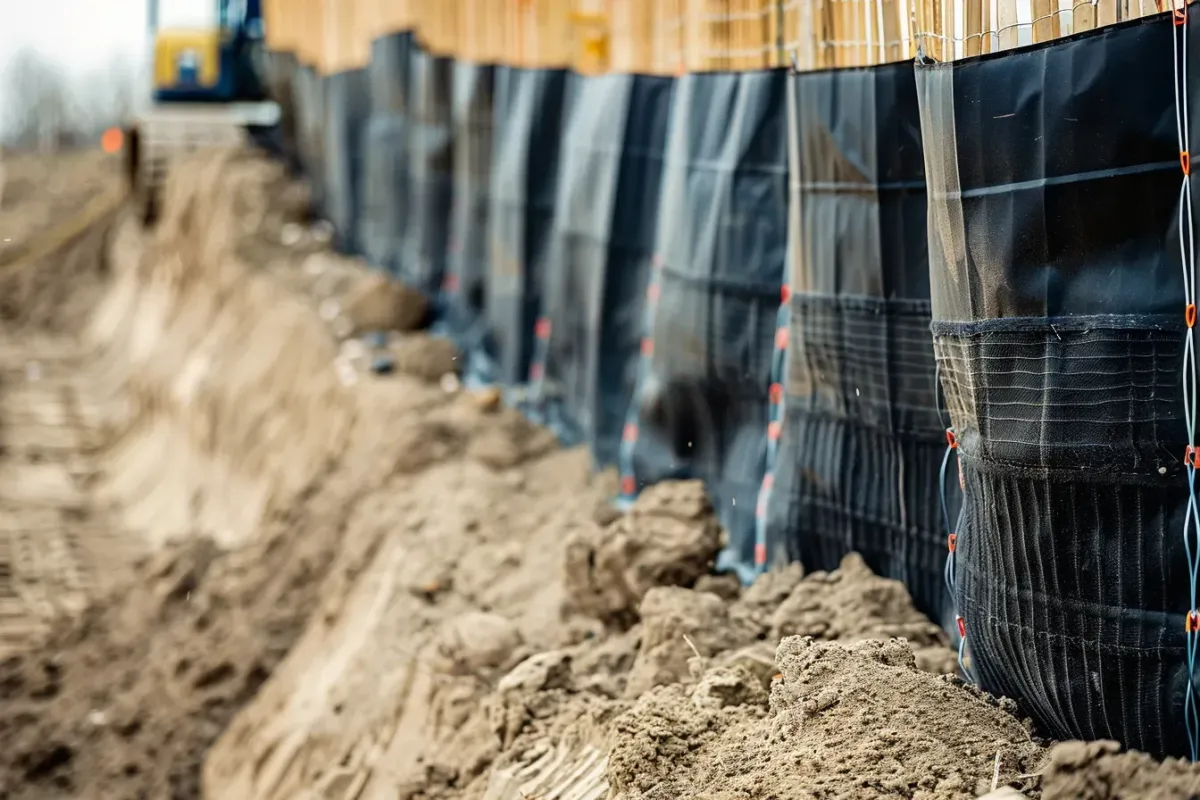
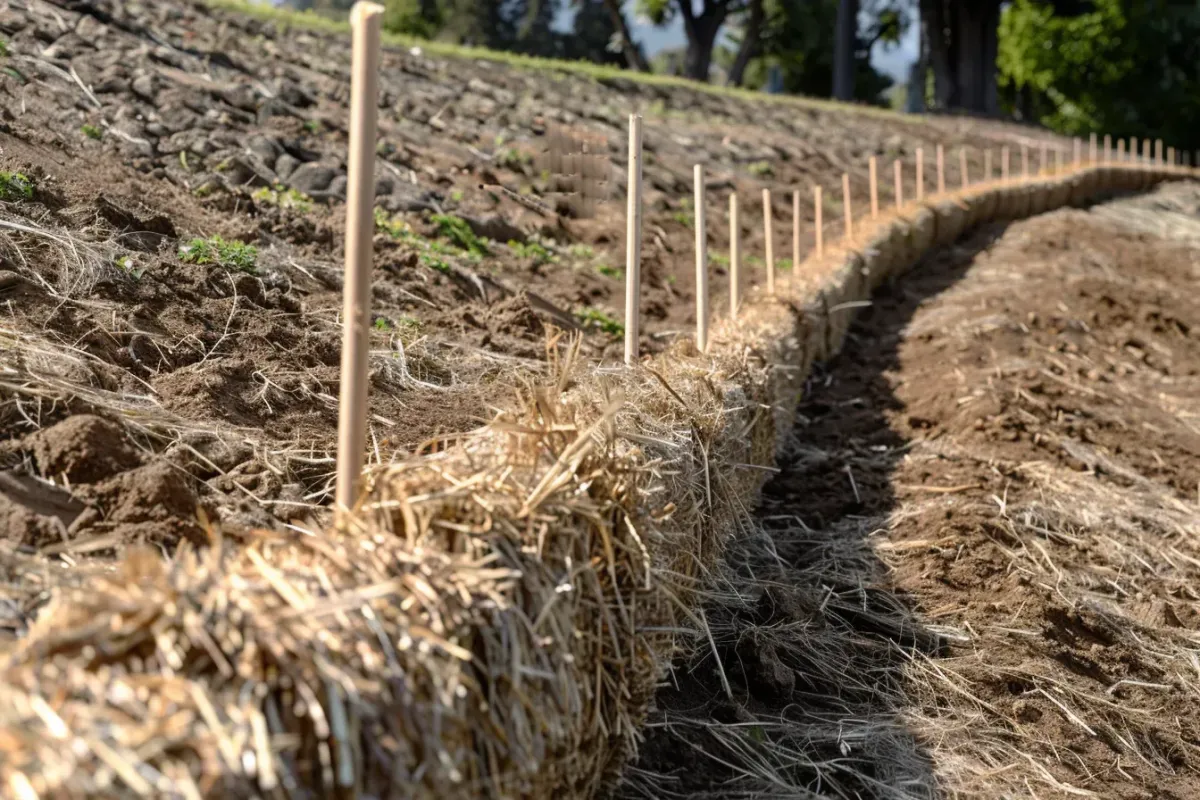
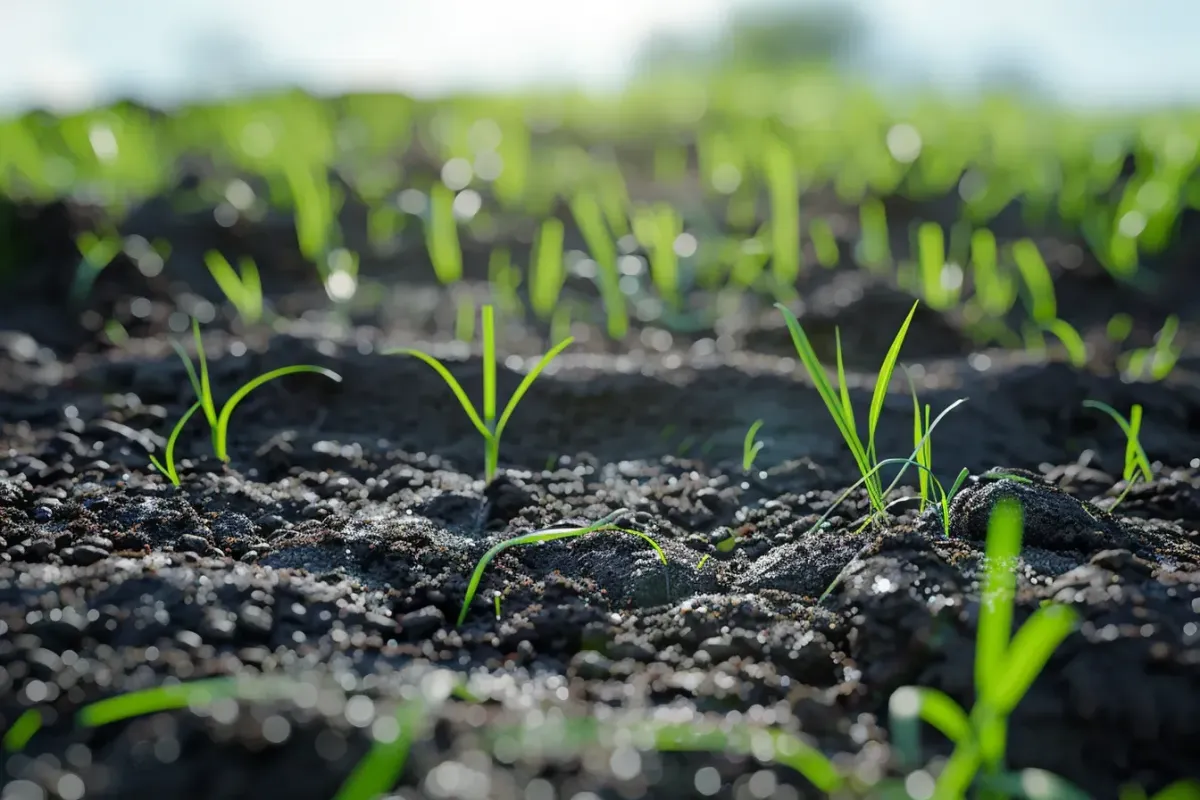
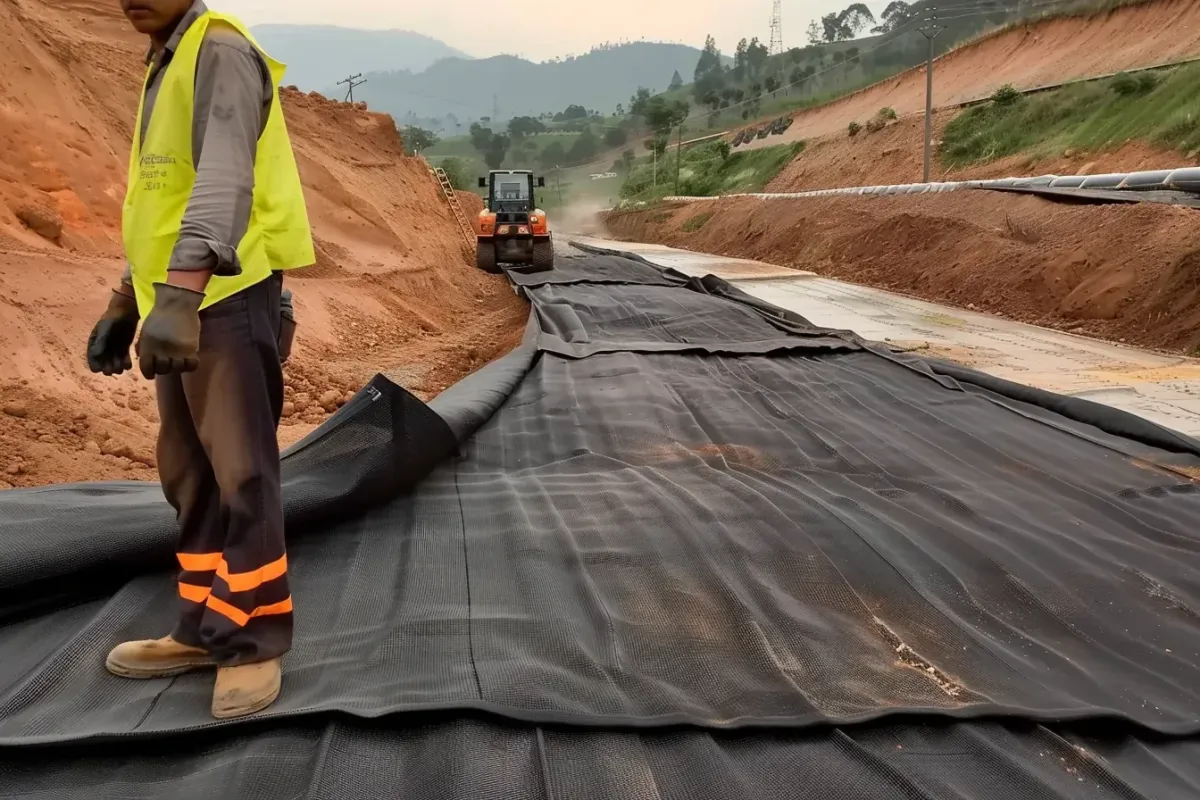
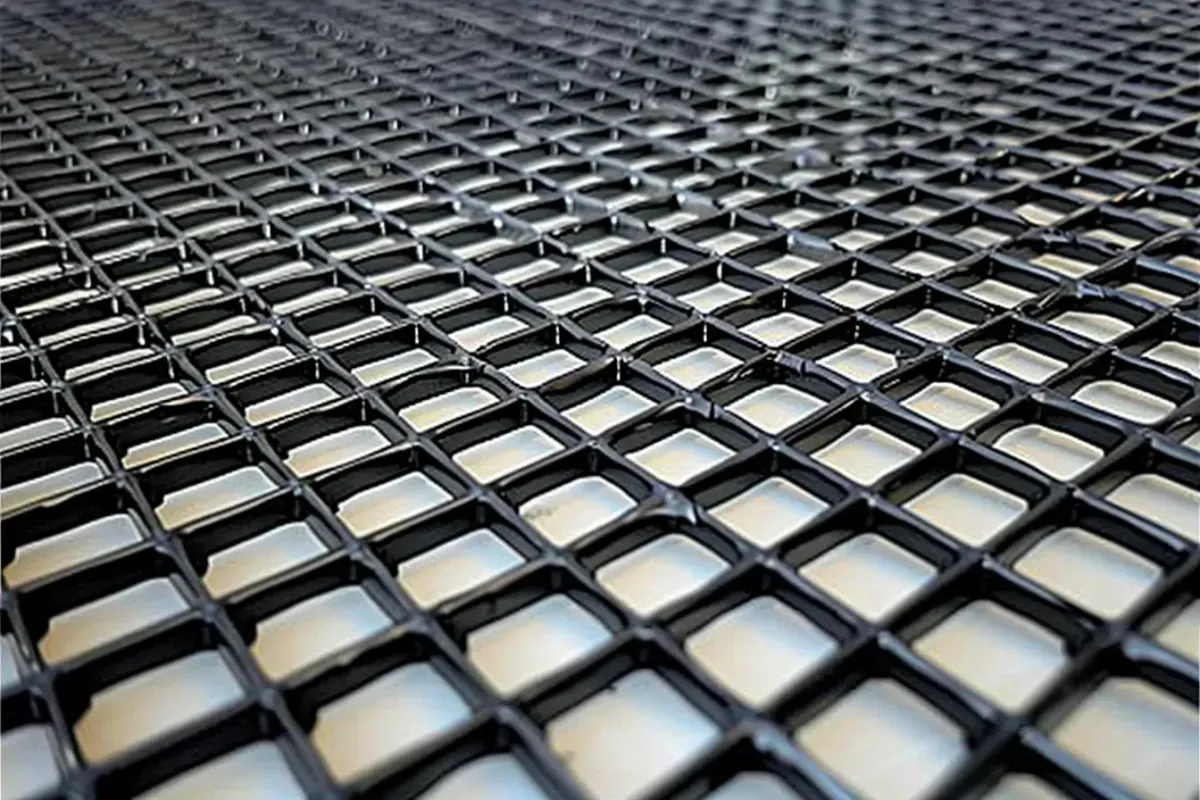
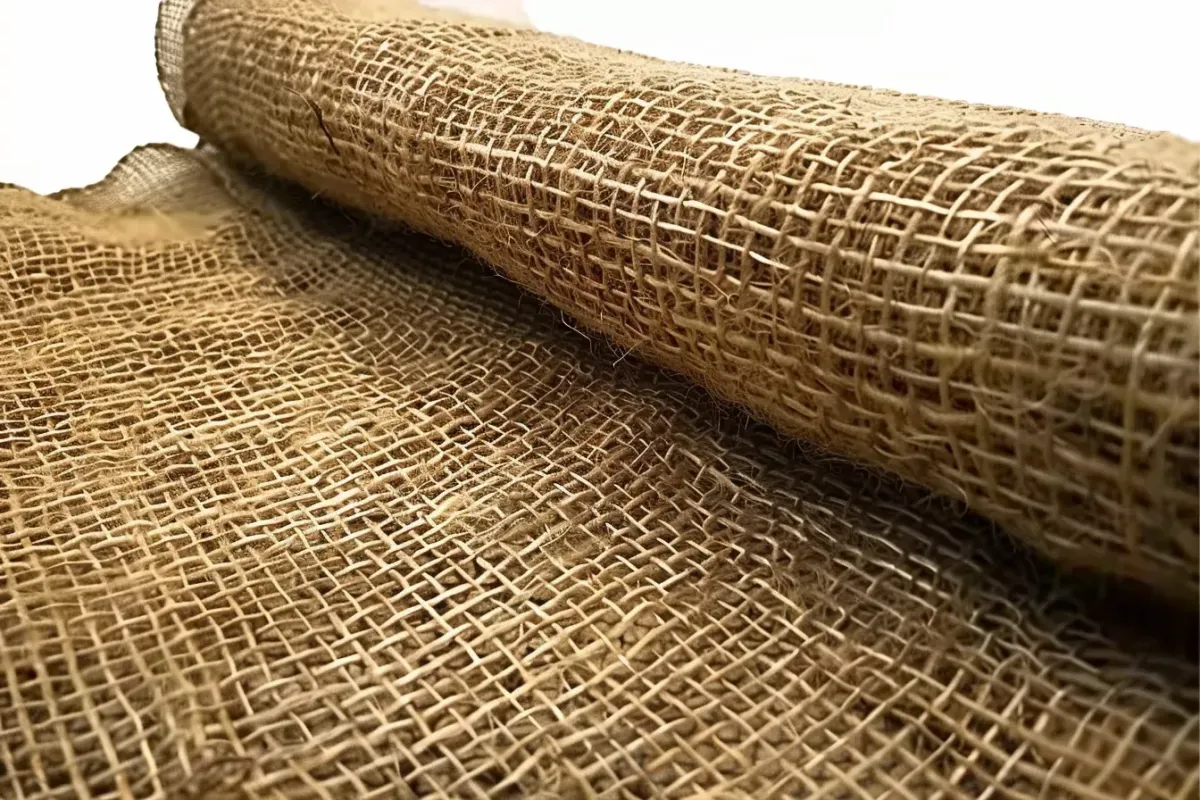
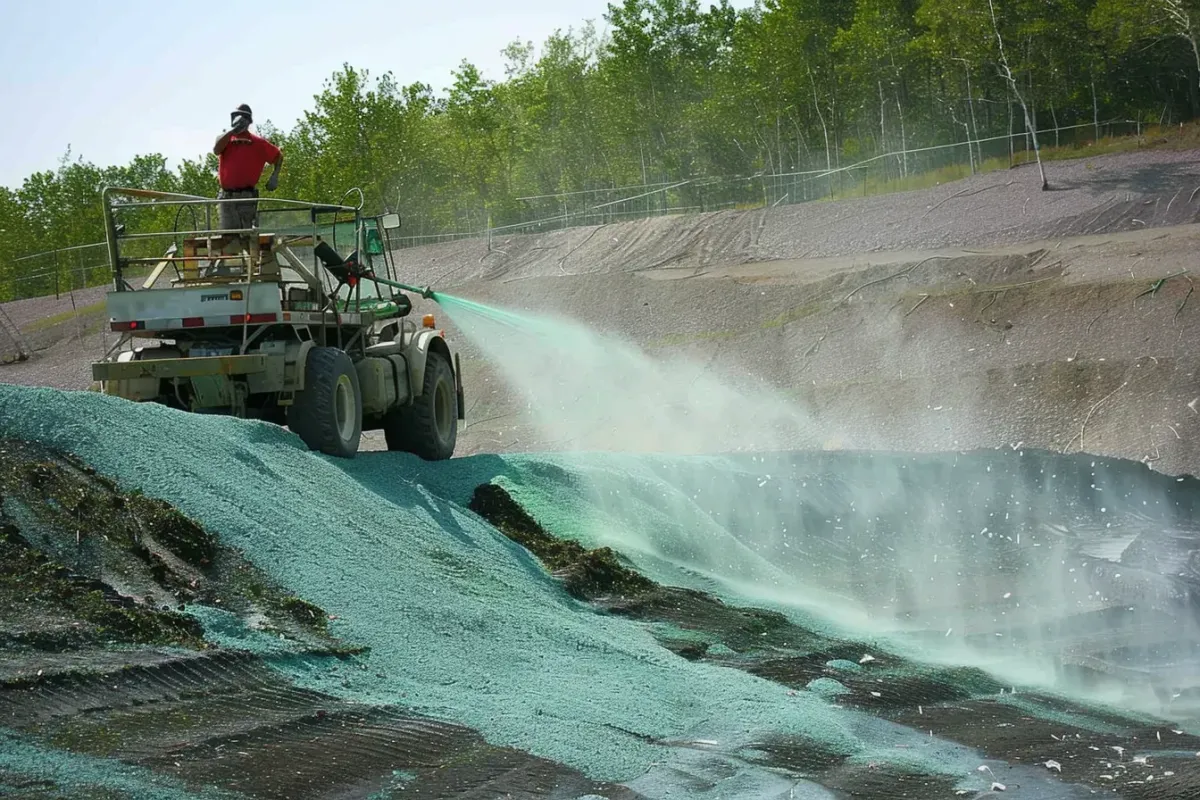
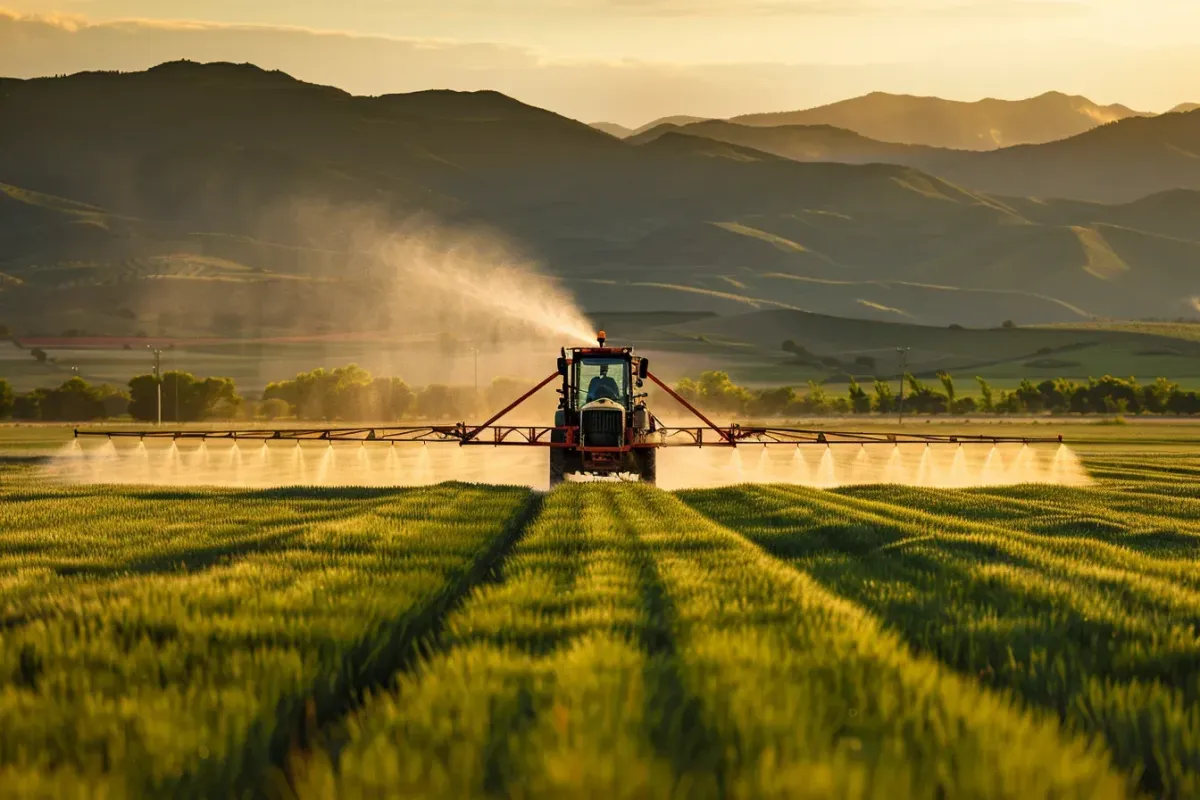
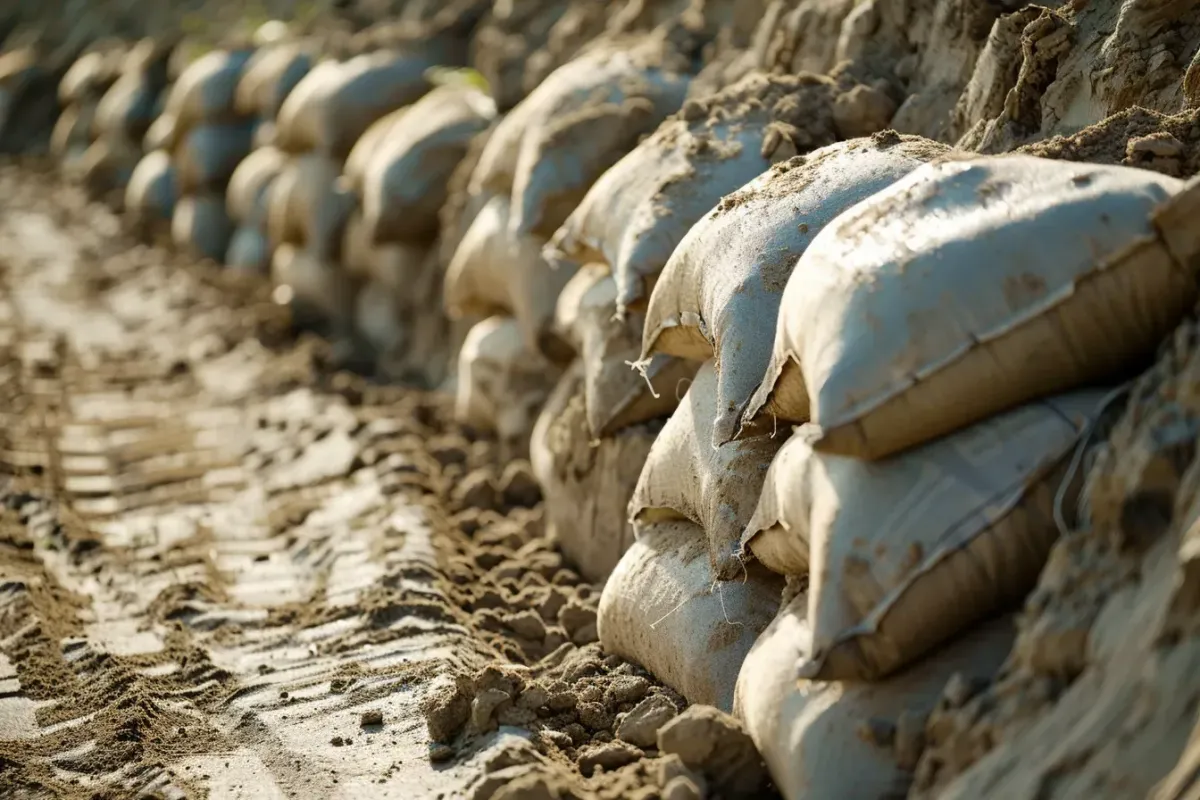
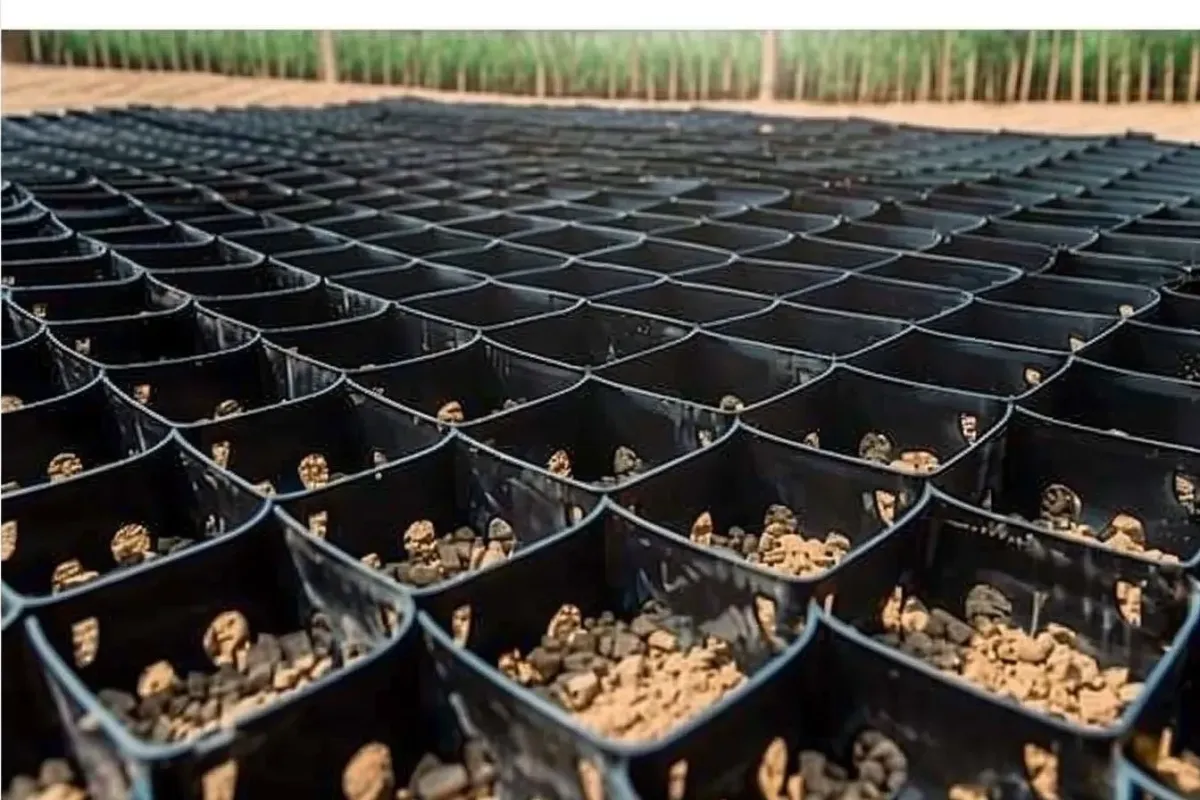
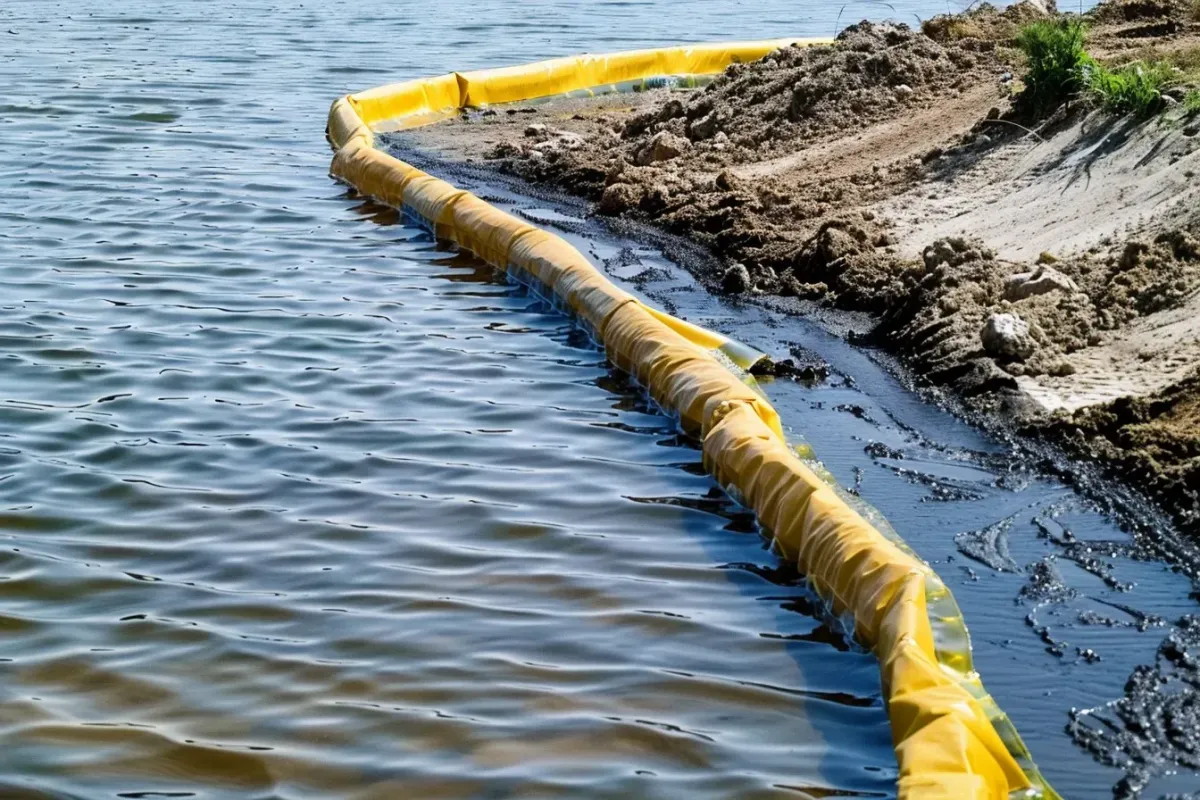
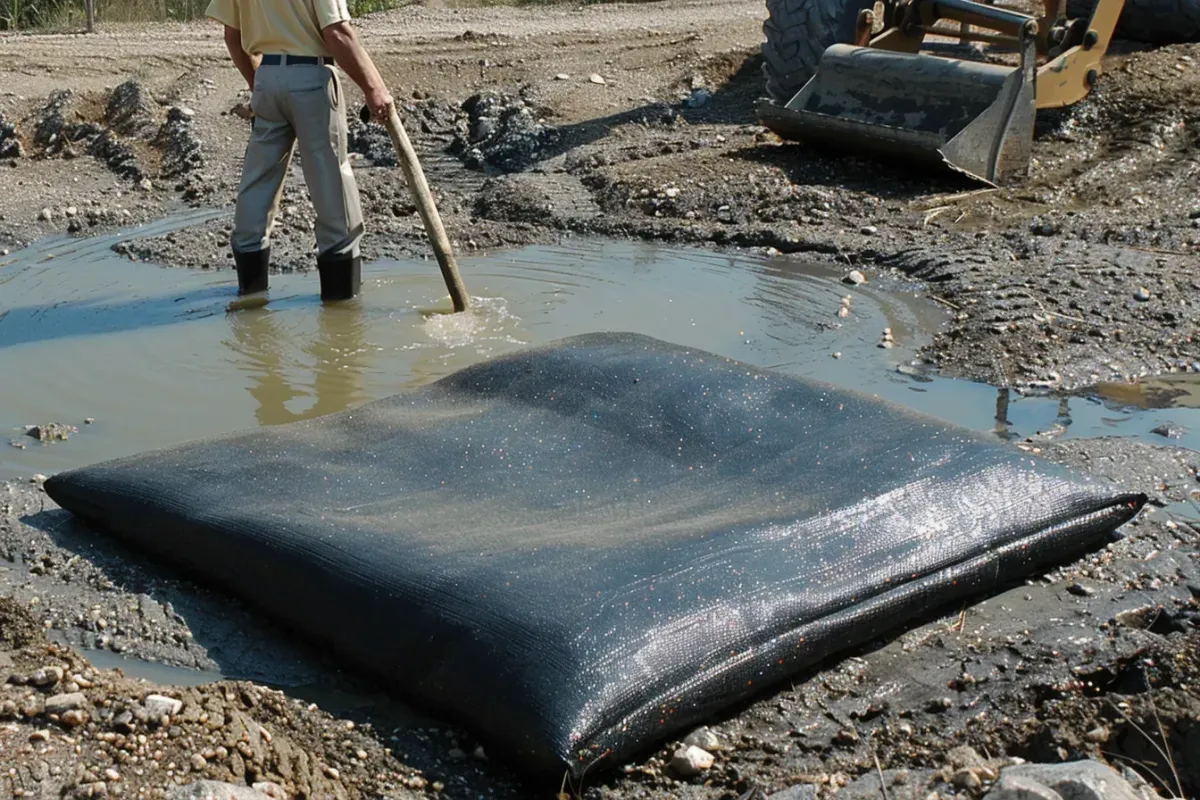
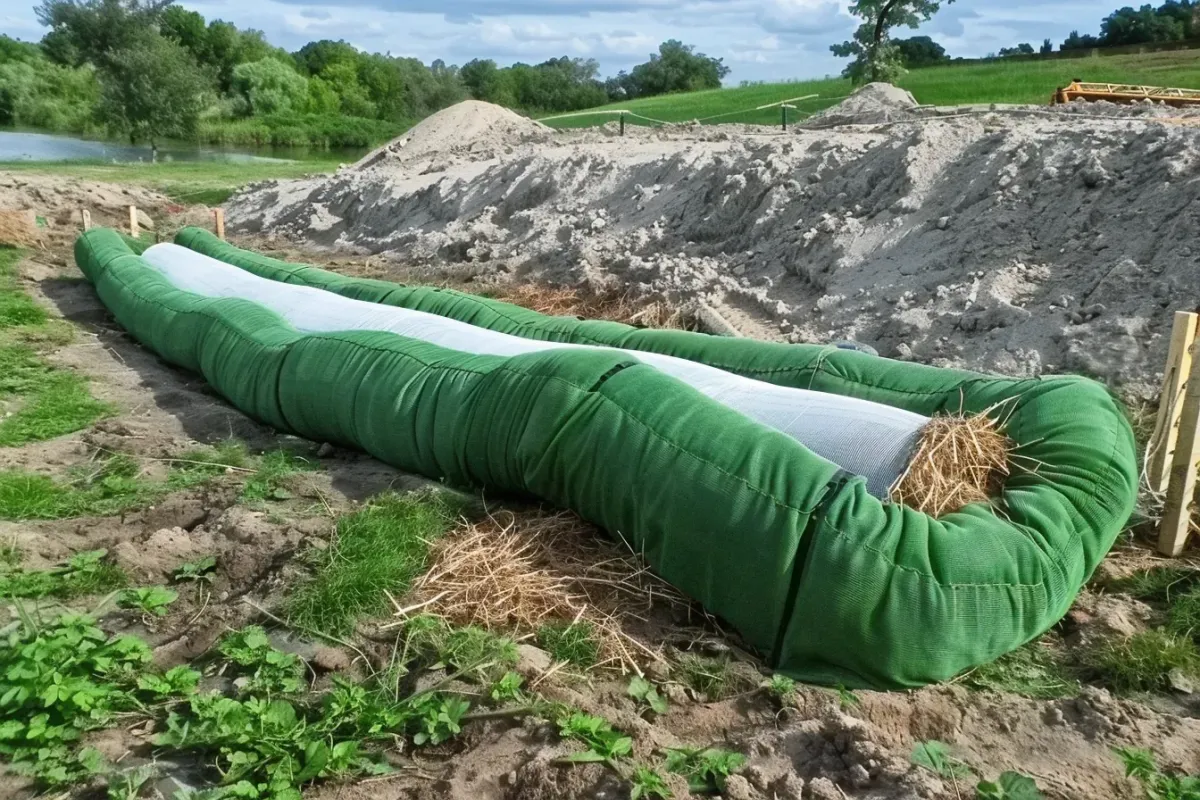
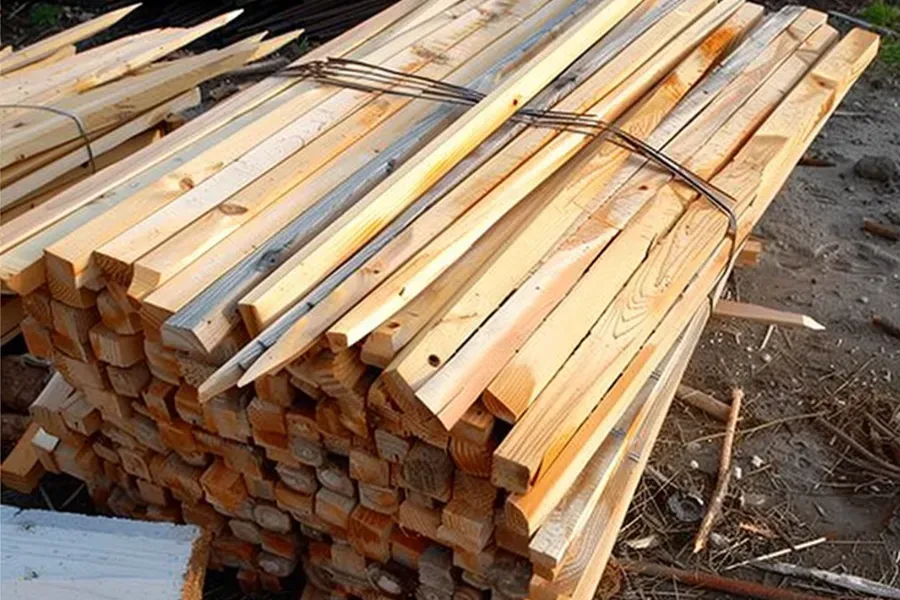

Facebook